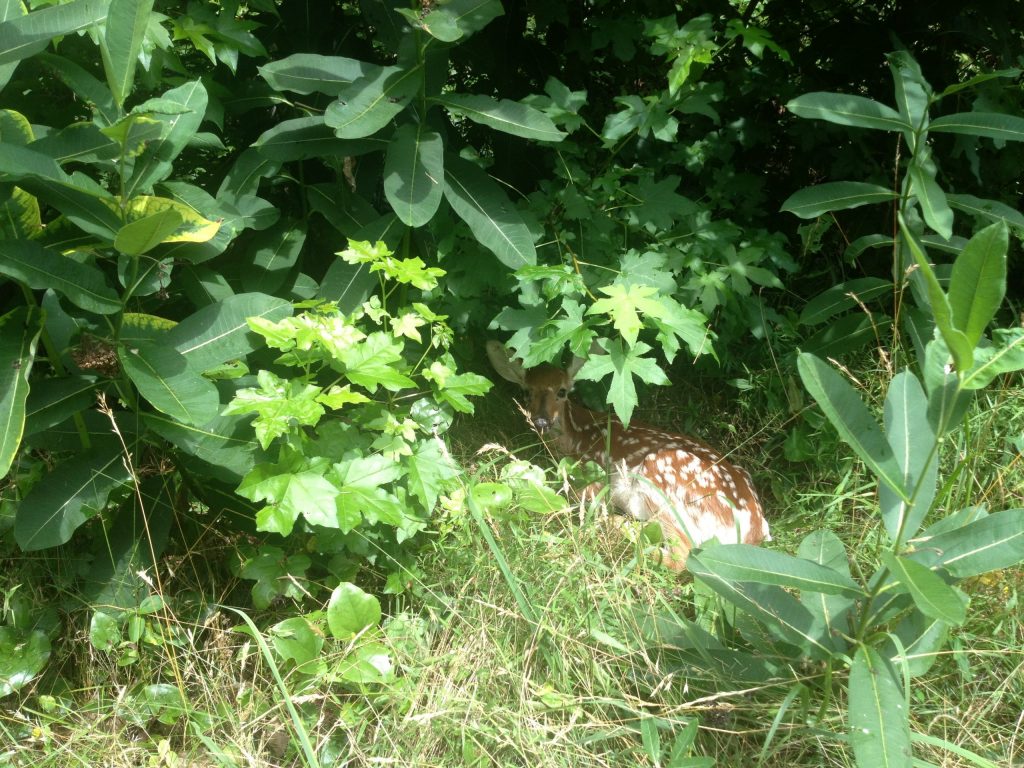When people talk about fawn survival (or mortality), they aren’t really interested in the number of fawns that were run over or succumbed to salmonella.
They don’t care how deer density or landscape type may or may not influence fawn survival. The one and only question they are truly captivated by is what predator killed the most fawns.
It is no surprise that the Big 3 – black bears, canid species (coyotes and domestic dogs), and bobcats – kill the most fawns in North America. They accounted for 83% of all fawn predation. (If you are wondering about the other 17%, 14% was from an unknown predator with another 3% of a random fox or whatnot.)
After reading study upon study of fawn survival until your eyes are slightly bloodshot and watering, you will begin to see the many ways each study classified causes of death. Determining if a fawn was killed by a car is pretty easy. Determining who snacked upon a fawn, not so much.
Standard operating procedure for any dead animal in a mortality study is field investigation followed by necropsy. If you’ve followed the blog for a while, you’ve “sat” in on a few of these. Piecing together information from the necropsy (size of bite wounds, the distance between bites, location of bites, any tears, hemorrhage, etc) in context of the field investigation (tracks, scat, hair, caching, etc) the killer is named. In some cases, even DNA is used.
Despite all these tools, there is one very large dilemma – determining the difference between a fawn killed by a coyote versus a domestic dog. This is noted as a source of uncertainty in many studies.
Studies have different ways of dealing with the difficulty discerning between coyote and domestic dog kills. Some list the number of fawns that died from coyotes and discussed how domestic dogs could have been responsible for a portion of those deaths while others make no attempt to differentiate at all. Since both coyotes and domestic dogs are both in the same family (Canidae), it’s easier and accurate to report the number of fawn deaths attributed to canids.
As a result, for this analysis whenever a coyote or domestic dog was listed as cause of death, it was tallied as a candid.
Of the Big 3, who came in #1? Canids took first place followed by black bears.

Let’s talk about landscapes again. While there weren’t enough data to see how bear and bobcat predation varied among landscape types, canids were a different story.
Research from the southeast suggests that when fawns have edge habitat in their home range – aka an edge between forest and more open agricultural fields – they may be less vulnerable to predation from coyotes. If this is the case, the proportion of fawns that died from canid predation would be lower in mixed landscapes.
This doesn’t appear to hold true as the proportion of fawns that died from canid predation was similar in all three landscape types.

So what have we learned?
In North America –
- Deer density doesn’t affect fawn survival
- Landscapes with greater agricultural land cover have higher fawn survival
- Predation is the leading source of fawn mortality in all landscapes
- The proportion of mortalities attributed to predation is consistent across landscapes
- And canids are the leading predator of fawns
But what does all this mean for deer in Pennsylvania? Stay tuned.
M.S. Graduate Student
Previous articles in this series:
Fawns, Predators, and Deer Populations-what’s the bottom line on fawn survival?
Bunches, Heaps, and Gobs of Fawns
Land of the Living
A Million Ways to Die
Don’t Run that Way
Next article in this series:
If you would like to receive email alerts of new blog posts, subscribe here.
And Follow us on Twitter @WTDresearch
